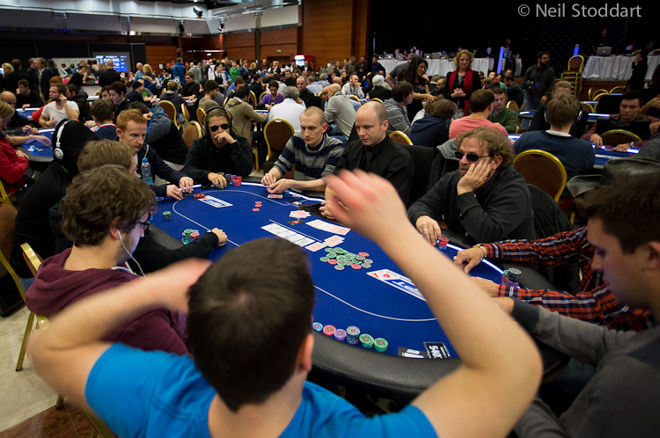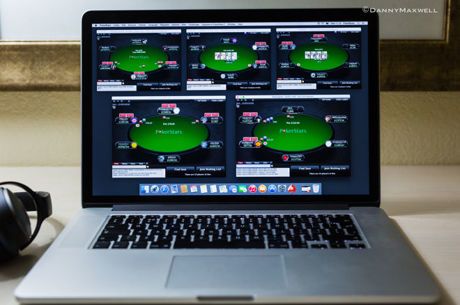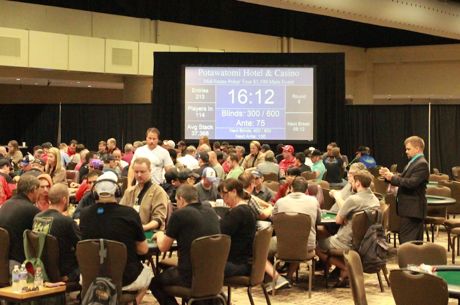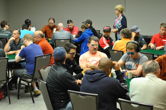Understanding the Value of Position in Poker

No matter what poker variant you play, it is always going to be preferable to play a hand with position on your opponent(s) than to play it out of position.
Position is especially important in no-limit hold'em given the fact that unlike in fixed-limit games, the player acting last can exert greater control on the pot size, thereby making things very uncomfortable for an out-of-position opponent.
New players often seek advice about starting hand selection. They realize (hopefully) they can't play every hand they are dealt, so they know they need to be selective. They know pocket aces and kings are great and so is ace-king, and that eight-trey and seven-deuce are among the worst hands you can be dealt. It's the hands in between — like A♠9♣ or 9♠7♦ or 5♦4♦ — that cause novices problems, so they look for help.
When they do seek advice about how to play such medium-strength (or even weak) hands, table position is always going to be a factor affecting recommendations about starting hand selection. You want to play aces and kings from anywhere, and probably ditch seven-deuce in all but a few special spots. But when it comes to most of the hands you'll be dealt, position absolutely matters.
Take a hand like K♦10♣, one that ranks ahead of most starting hands though is not a "premium" holding. Experienced players often include king-ten offsuit among the category of "trouble hands" since it is often enticing to play but more often than not gets players into trouble after the flop.
Consider two no-limit hold'em hands, both of which involve a player with K♦10♣. In one the player has opened with a raise from under the gun and gotten a caller on the button. In the other the player raised from the button and only the big blind called.
Any flop containing either a king or a ten gives the player a pair plus a non-nut kicker. That will happen almost a third of the time. Once in a while something even better will flop — e.g., two pair, trips, a straight — and occasionally, also, the player will flop draws (most of them gutshots).
Most of the time, though, the flop will miss K♦10♣, just as flops often miss non-pair hands. In the great majority of cases, the flop either is not going to improve king-ten offsuit at all, or it will make at best a one-pair hand for the player — kings with a ten kicker, or tens with a king kicker.
Let's imagine the best case of the two — the one in which the player makes a pair. In fact, let's choose the better pair and imagine a flop coming K♥J♠5♥.
Frequently the player who has K♦10♣ in late position will watch an opponent in the big blind check. That player can then continuation bet and likely pick up a small pot, or check and perhaps bet following a safe-seeming turn card (a "delayed c-bet").
If the player bets and the big blind calls, the player will then be able to reevaluate the situation following a turn card and the opponent's action. Regardless of how things proceed, the player in position is able to measure risk-versus-reward fairly accurately, including controlling the size of the pot. Top pair, weak kicker is often good in heads-up situations, but if the board becomes "wetter" (with straight and/or flush draws), the player on the button might not want to — and won't have to — get anymore involved than is desirable.
Now give the exact same K♦10♣ to a player in the big blind who has to act first following that K♥J♠5♣ flop versus a player with position.
Leading with a bet may be correct versus a loose opponent who calls from late position with a wide range of hands if that player has shown a tendency to tighten up postflop. However in most spots, to bet and be called or raised puts the bettor in a difficult position going forward.
In many situations, check-calling will be the most logical action for the player on the flop, if the player wishes to continue at all. Check-calling may be the play on the turn and river as well, although as the pot gets bigger so will the bets, while the board may or may not fill complete in a "safe"-seeming way.
The fact is, in no-limit hold'em position very often has greater importance than hand values. (Stack sizes are a third, relevant factor, often more obviously relevant in tournaments or shallow-stacked cash games.)
Players are only dealt pocket pairs once every 17 hands on average. That means 16 of 17 times they start with non-pair hands, and as noted only around a third of the time with those hands will improve to a pair or better. Most of the time in heads-up situations after the flop, then, players will be battling for a pot with weak or (at best) medium-strength hands, which means position often matters more than hand strength.
All situations are unique, of course, but generally speaking a starting hand like king-ten offsuit will create more trouble for players when played from out of position than when played with position. That's true of just about all hold'em hands, actually, but more obviously so with such "trouble hands."









